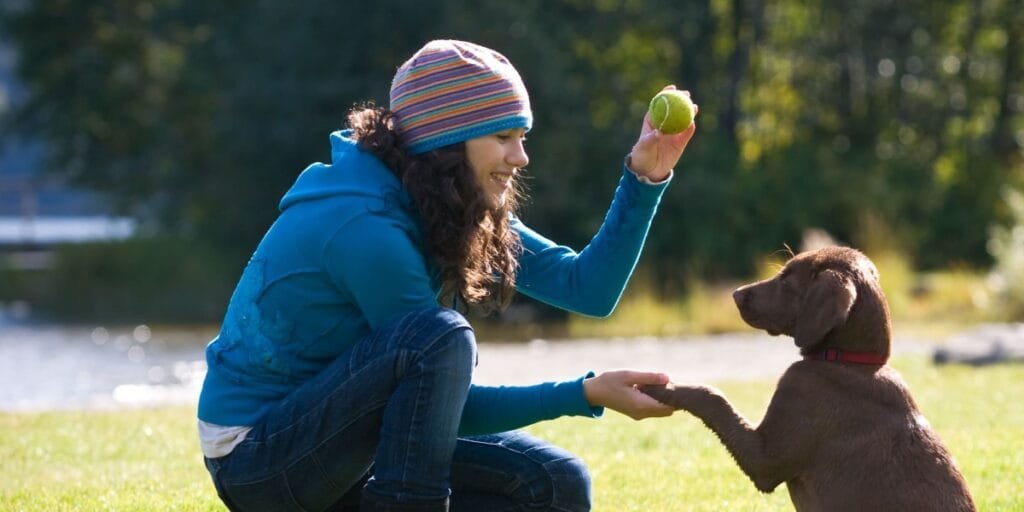Bringing a puppy home is one of life’s greatest joys — and one of its biggest challenges. That tiny bundle of fur with the oversized paws and curious nose is adorable, yes, but also full of energy, mischief, and zero idea how to live in your human world.
Without guidance, even the sweetest pup can grow into a dog with habits that are hard to manage. But the good news? With a few simple steps, a lot of patience, and the right mindset, you can raise a well-behaved, happy dog who knows how to thrive in your home.
Whether you’re a first-time dog owner or brushing up before bringing home your next pup, here’s how to set the stage for success from day one.
Start with Structure: Puppies Need a Routine
Dogs, especially puppies, thrive on routine. Establishing a consistent schedule helps them learn faster and feel more secure.
Here’s what a basic puppy routine should include:
- Feeding: Same times every day. This helps with both digestion and potty training.
- Potty breaks: Young puppies need to go out every 2–3 hours (including after eating, drinking, or waking up).
- Nap times: Puppies sleep a lot. Let them rest frequently in a quiet, cozy space.
- Play and training: Short sessions of active play and basic obedience help burn energy and build trust.
Predictability gives your puppy a framework to learn what’s expected — and keeps chaos to a minimum.
Potty Training: Patience Is Everything
Potty training is one of the first big hurdles, and it’s where consistency really matters.
Tips to get it right:
- Set a timer: Take your puppy out every 2 hours, and right after meals, naps, and playtime.
- Use a cue word: Say something like “Go potty” while they’re doing their business so they connect the word with the action.
- Praise immediately: Reward with treats and excitement as soon as they go — not when you’re back inside.
- Supervise indoors: Keep your puppy within view or use a leash indoors so they can’t sneak off to potty in secret.
- Don’t punish accidents: It only creates confusion and fear. Clean up with an enzymatic cleaner and move on.
With patience, your pup will figure it out — promise.
Crate Training: Your Puppy’s Safe Haven
Crate training is one of the best tools for house training and creating a calm, confident dog. When introduced properly, the crate becomes a cozy den, not a punishment.

How to make the crate a positive space:
- Keep the crate in a common area (not isolated).
- Feed meals in the crate so it’s associated with good things.
- Start with short periods of crating while you’re home.
- Never use the crate as punishment.
A well-crate-trained puppy learns independence, reduces anxiety when left alone, and avoids destructive behavior when unsupervised.
Basic Commands: Keep It Simple (and Fun!)
Teaching basic commands isn’t just about obedience — it’s about building communication. Start with the essentials:
- Sit
- Stay
- Come
- Leave it
- Down
Use short, 5–10 minute training sessions with high-value treats and lots of praise. Keep your tone upbeat, and always end on a positive note. Puppies have short attention spans, so less is more — for now.
And remember: consistency from everyone in the household is key. If one person allows jumping and another discourages it, your puppy will get mixed signals.
Socialization: The Critical Window
Between 8–16 weeks, your puppy is especially receptive to new experiences. This is the golden window for socialization, and it shapes how they react to the world for the rest of their life.
Expose your pup gently to:
- Other dogs (vaccinated and friendly)
- New people (different ages, clothing styles, voices)
- Car rides
- Household noises (vacuums, doorbells)
- Different surfaces (carpet, grass, concrete, tile)
The goal isn’t to overwhelm them — it’s to create positive associations so the world feels safe and exciting, not scary.
Reward Good Behavior, Redirect the Rest
Positive reinforcement is the foundation of modern dog training. Rather than punishing unwanted behavior, reward the behaviors you want to see more of.
- Catch your puppy being good: Calmly lying down? Reward it. Sitting before a treat? Praise it.
- Redirect: Chewing your shoe? Swap it out for a chew toy instead of yelling.
- Ignore attention-seeking whining or jumping — and reward calm, patient behavior.
You’re not just teaching commands — you’re teaching how to be a well-mannered member of the family.
Puppy Biting and Teething: It’s Normal (and Temporary)
Puppy teeth are like tiny needles, and they will find your fingers at some point. This phase is natural, but it still needs managing.
Tips for handling puppy biting:
- Redirect to chew toys or frozen teething rings.
- If biting continues, give a firm “No” or “Ouch,” then calmly withdraw attention.
- Avoid rough play that encourages biting.
Stay consistent, and this phase will pass — usually by 6–8 months when adult teeth are in.
Final Thoughts
Raising a well-behaved dog starts with the right foundation in puppyhood. It’s not about perfection — it’s about consistency, patience, and a whole lot of love. Your puppy doesn’t need to be flawless. They just need a guide. Someone to show them the rules, help them learn safely, and celebrate every tiny win along the way.
Before long, that wobbly, wide-eyed pup will grow into a confident, loyal companion — thanks to the time and care you put in from day one.
You’ve got this. And your puppy’s lucky to have you.

